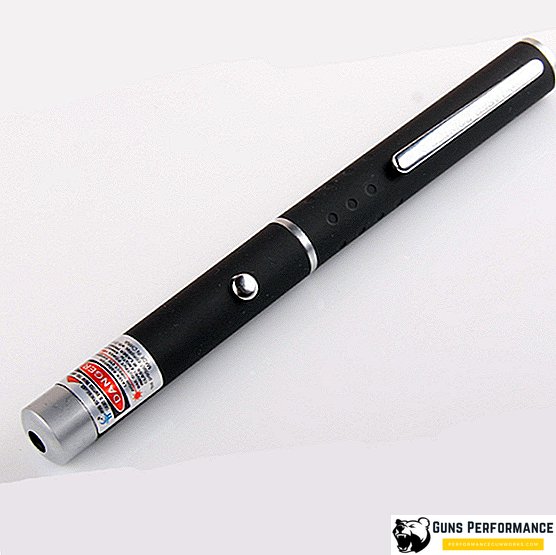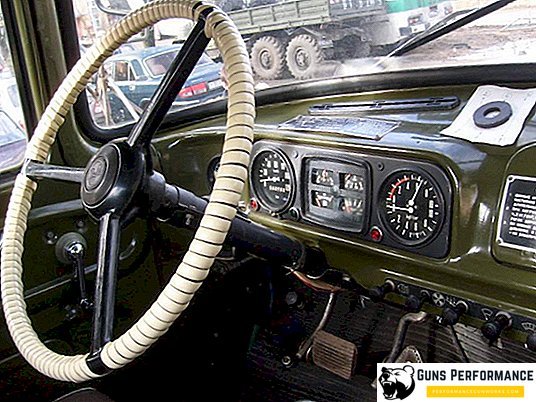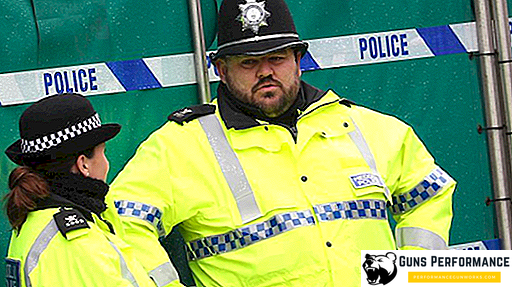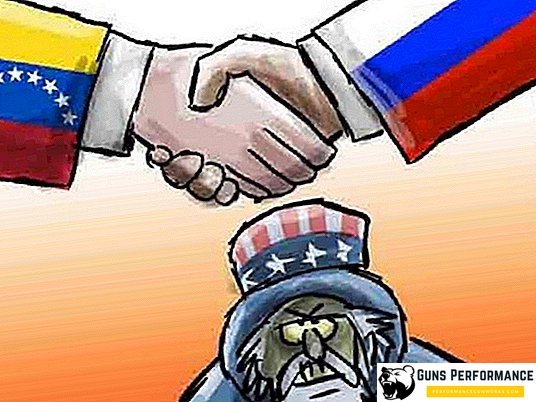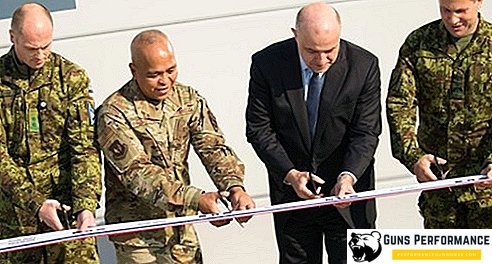The Bell P-39 Airacobra (or Air Cobra) is an American fighter of the Second World War period. This aircraft was not quite the usual layout for that time, which consisted in the fact that the engine was located behind the cockpit.

A total of 9,584 P-39 aircraft were produced; About 4500 of them were delivered under Lend-Lease in the USSR. The plane was in service with seven states: the United States, the Soviet Union, Britain, Australia, France, Italy and Portugal.
History of creation
The firm "Bell Aircraft", which had developed the fighter and set up its production, was founded in 1935 in Buffalu by three leading experts who had previously worked at the "Consolidated" company. Already in June 1936, Bell Aircraft's specialists began to develop a new fighter, the design of which used as many as two innovations.
The first innovation, as mentioned above, was the placement of the engine behind the cockpit, which was connected with a propeller by means of a shaft. This innovation allowed to significantly improve the maneuverability of the aircraft, as well as slightly increase the security of its engine, as it was previously believed that damage to the nose of the fighter guaranteed serious damage to the engine. Another positive aspect of this decision was an improved overview for the pilot, which in combat conditions and also during takeoff or landing, could sometimes cost his life as well as to the plane. Previously, the review was seriously hampered by a nose bulging forward, which had considerable dimensions due to the engine in it. The sloping and small nose part of the Aero Cobra fighter very successfully solved this problem.
Other know-how used in the design of the aircraft, was the so-called "nose" landing gear. This design solution was the source of a sufficiently large number of advantages, such as: more convenient control of the aircraft during takeoff or landing, as well as substantially reduced risk of nosing (dropping the aircraft on the nose).
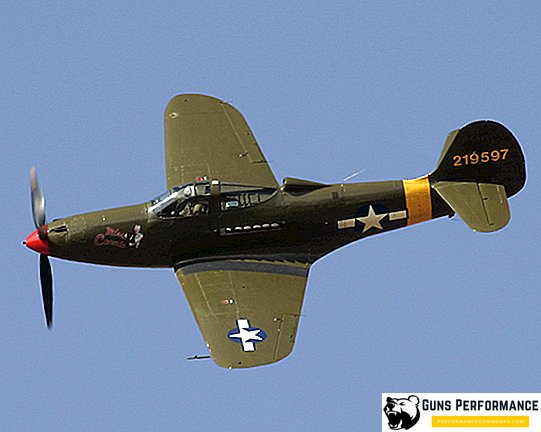
In 1936, due to the growing tension in the world political arena, the United States Air Force announced a competition to develop a new fighter project. Already in May 1937, the Bell Aircraft project (then called the Bell Model) was reviewed and approved by the commission, and in October of the same year, the company signed a contract for the manufacture of a prototype of the future fighter named XP-39.
The first flight of the aircraft was carried out in early April 1939. Pilot Jim Taylor managed to reach a speed of 628 km / h with an aircraft weight of 2.5 tons. However, it should be noted that this flight was carried out without armor and weapons. A week later, on April 13, 1939, the United States Air Force and Bell Aircraft firm signed a contract for the manufacture and delivery of the first 13 fighters to the army.
In September 1939, the aircraft was subjected to various and comprehensive tests at NACA. As a result of these tests, a large number of changes were made to the design of the aircraft, which caused a change in its name from "XP-39" to "Bell Model 12".
Overview and Features
The Aircobra is a monoplane with a three-pillar chassis. The case is all-metal single. The wing is low; screw - three-blade, with variable pitch.
Protection of the pilot and the engine is achieved by 6.5 mm steel armor, as well as armored backs behind the cabin. The front lamp is protected by armored glass 37 mm thick, rear - 63 mm thick bulletproof glass.
The fighter’s armament is represented by the 37-mm M4 cannon, whose ammunition was 30 rounds, or the HS-404 20-mm cannon with 60 rounds ammunition, as well as two or four M2 12.2-mm Browning machine guns.
The advantages of this aircraft include its exceptional maneuverability, as well as the improved aerodynamic shape of the nose, which provided the best air flow around the aircraft. Another important advantage is the powerful 37 mm cannon mounted in the nose of the Aircobras instead of the engine. The power of this gun significantly exceeded all aircraft machine guns of the time.
It is also to be noted that the location of the engine behind the pilot's cabin seriously increased its safety, which, in conjunction with armored gear, significantly reduced the likelihood of injury or death of the pilot from an attack from the back.
But, like all airplanes, the Air Cobra also had its drawbacks. The main and practically the only serious drawback was that when performing aerobatics, the fighter often fell into a tailspin, often with tragic consequences. Maneuverability was bought at such an expensive "price", if, of course, you can talk like this about the lives of pilots.
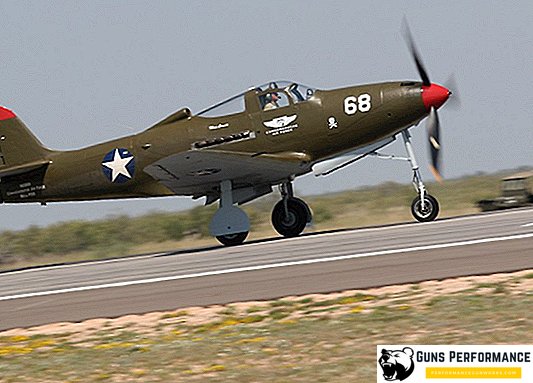
Tactical, technical and flight characteristics "Bell P-39 Airacobra":
- Crew: 1 (pilot)
- Length: 9.16 m
- with cannon: 9.58 m
- Wing Span: 10.36 m
- Height: 3.78 m
- Wing area: 19.86 m²
- Wing extension ratio: 5.35
Wing Profile: NACA-0015 - Wing Root, NACA-23009 - Ending
- Chassis base: 3.04 m
- Chassis track: 3,454 m
- Weight empty: 2642 kg
- Normal take-off weight: 3556 kg
- Fuel tank capacity: 455 l
- Power point: 1 × liquid cooling Allison V-1710-35
- Engine power: 1 × 1150 l. with. (1 × 846 kW)
- Air screw: three-bladed "Curtiss"
- Screw diameter: 3.16 m
- Maximum ground speed: 493 km / h
- Maximum speed at height: 585 by 4200 m
- Cruising speed: 528 km / h
- Landing speed: 145 km / h
- Practical range: 993 km (550 m)
- Flight duration: 3.65 h
- Practical ceiling: 9600 m
- Takeoff run: 300 m
- Run length: 350 m
- Turn time: 19 seconds
- Turning radius: 253 m
- Cannon armament:
- 1 × 37 mm M4 cannon with 30 rounds or
- 1 × 20 mm M1 cannon with 60 rounds (D-1, D-2)
- 2 × 12.7-mm machine guns M2 270 patr. (D-2 to 200) each in the nose of the fuselage
- 4 × 7.62-mm machine guns of 1000 rounds each in the wing
- Bombs: 1 × up to 272 kg
- Suspended fuel tanks: 1 × 283 l or 566 l under the fuselage
In the sky of World War II
At first (since the autumn of 1940), the Air Cobra was exclusively in service with the US Air Force. Everything changed in 1941, when the first Air Cobra began lending to the UK through lend-lease. However, it should be noted that there was absolutely no way for the aircraft to display its high combat qualities: the battle for Britain actually ended with the German attack on the USSR, although the air battles over the metropolis and the Channel Tunnel continued. Basically, the air battles did not go at low altitudes, where the potential of the Air Cobra could be fully revealed.
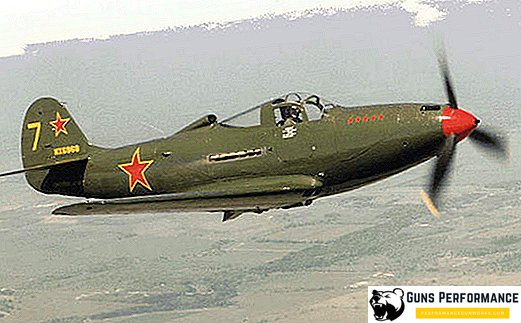
After just five months in service with the Royal Air Fleet in the metropolis, the fighters were deployed to the Middle East to fight Rommel’s African corps and to South-West Asia to participate in the fight against the Japanese Empire. Also part of the "Aerokobr" was proposed to the Soviet Union.
In the ranks of the Red Army
As part of the air forces of the Red Army on the battlefields of the Great Patriotic War, the Air Cobra was baptized in combat on May 16, 1942 on the Karelian Front in the Arctic (19th Guards Fighter Aviation Regiment).
Were taken into account the difficulties that Soviet pilots and technical staff had already encountered before using other Allied aircraft (for example, Hurricane), which were supplied under lend-lease. That is why it was decided not to supply the Aerocobras immediately to the arsenal of the active army. This decision was fraught with two reasons. The first reason was the need to better examine the aircraft and prepare it for the specific conditions of this theater of operations. Indeed, in the first months after the start of deliveries of airplanes to the Soviet Union, many large aviation institutes worked on the Aerocobra. The second, no less important reason was the rather "whimsical" behavior of the fighter on bends or when performing aerobatics. That is why the training of pilots on the P-39 should be given exceptional attention.

The first regiment, fully equipped only with Aero Cobra fighters, was the 153rd Fighter Aviation Regiment, which operated as part of the Voronezh Front. The battle for Voronezh is one of the most heroic pages in the history of the P-39. Thus, in just three months of fighting, from the end of June to the end of September 1942, in the midst of fierce battles with the Nazi troops seeking to occupy Voronezh, the 153rd regiment destroyed over 60 enemy vehicles, losing no more than 10 vehicles. For high merits, the regiment was awarded the rank of Guards (renamed the 28th Guards Fighter Aviation Regiment).
It is worth noting that it was on the fronts of the Great Patriotic War that all the advantages of the Air Cobra were fully revealed. This was largely due to the fact that Soviet pilots, unlike their Western counterparts, preferred to conduct air battles mainly at medium and low altitudes, for which the fighter was intended. That is why, and also because the second ace Alexander Ivanovich Pokryshkin flew second in performance on the P-39, the plane won the deserved love of Soviet pilots.
Famous Soviet Aces flying the P-39
As mentioned above, the most famous Soviet pilot-ace, who fought on the "Air Cobre", is Alexander Ivanovich Pokryshkin. He began flying the P-39 in the spring of 1943 and immediately recognized the huge potential of the aircraft and its high maneuverability. It would not be an exaggeration to say that Alexander Ivanovich creatively approached the development of tactics for action at the Air Cobbler. The numbers speak for themselves: in two years, from the spring of 1943 to the spring of 1945, he managed to shoot down 48 enemy aircraft, bringing his score to 59 aircraft.
Also on the P-39 flew and scored numerous victories such Soviet aces as Gulayev - 57 shot down aircraft, Golubev - 53, Rechkalov - 56, Glinka - 50, and others.). It is the high maneuverability of the Aero Cobra, multiplied by the exceptional courage and skill of these and many other aces, that has made it possible to achieve such results.
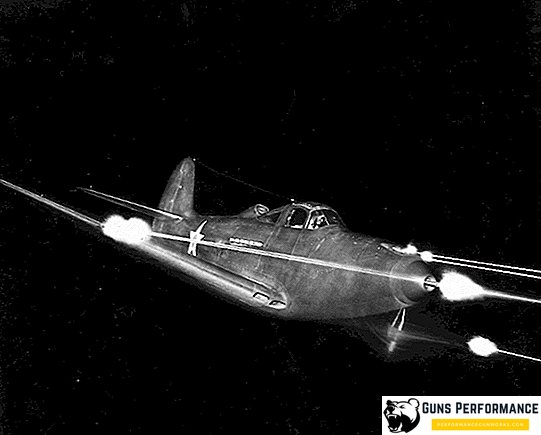
Conclusion
"Bell P-39 Airacobra" - quite extraordinary, if not unique, the plane of the Second World War. Designed and manufactured in the United States, he participated in the battles not only as part of the US Air Force, but also Great Britain and the USSR. At the same time as part of the Red Army Air Force fought no more, no less, and half of all produced by "Aerocobr"!
Appreciated by Soviet pilots, the P-39 was discreetly and cautiously greeted by American and British pilots, who feared the fighter because of its "whims" on turns.
It should also be noted that the P-39, developed and manufactured on the order of the US Air Force, came to the courtyard as part of the Red Army Air Force. Neither in the battles in the skies over Britain, nor over Western Europe, he simply could not realize all the investment potential. The reason is simple: the developers planned the aircraft mainly for use at medium and low altitudes, but the aerial allied doctrine is just the opposite. The nature of the air war, fully formed by the beginning of 1942, which envisaged a massive bombing of the industrial and administrative centers of the Third Reich, suggested flights and, as a result, air battles at high altitudes.
Nevertheless, the Bell P-39 Airacobra forever inscribed its dignified name in the glorious history of the Soviet, American and British Air Forces during World War II.





